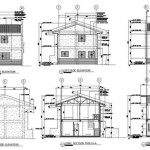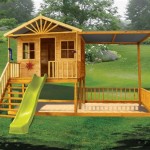House Plumbing Plan: A Comprehensive Guide to DIY Plumbing Success
Introduction:
A well-designed plumbing plan is the foundation of a functional and efficient plumbing system in your house. Whether you're building a new home or remodeling an existing one, having a clear and concise plumbing plan is essential to ensure a successful project. This article will provide you with a comprehensive guide to creating a house plumbing plan that meets your household's needs and ensures smooth operation for years to come. ### Step 1: Understanding Your Plumbing Needs Before you start creating a plumbing plan, it's crucial to have a thorough understanding of your household's water usage and plumbing requirements. Consider the following factors: -Number of occupants:
The number of people living in your house will directly impact your water usage and the size of your plumbing system. -Types of fixtures:
Make a list of all the fixtures you plan to install in your house, including bathrooms, kitchens, laundry rooms, and outdoor areas. -Water pressure:
Research the recommended water pressure for your area to ensure proper functioning of your plumbing fixtures. ### Step 2: Rough-In Plumbing Plan The rough-in plumbing plan is the blueprint for the underground plumbing system in your house. This includes the layout of water supply lines, drain lines, and venting pipes. When creating your rough-in plumbing plan, keep the following in mind: -Material Selection:
Choose durable and reliable materials for your plumbing pipes. Common options include copper, PEX, and PVC. -Pipe Sizing:
Ensure that the diameter of your pipes is appropriate for the expected water flow. Larger pipes are required for higher-demand areas like bathrooms and kitchens. -Placement of Fixtures:
Plan the location of your fixtures carefully to minimize the length of pipes and the number of fittings required. ### Step 3: Water Supply System The water supply system is responsible for delivering clean water to your household fixtures. Here's how to design an efficient water supply system: -Main Water Line:
Connect your house to the municipal water supply or a well using a main water line. Ensure that the line is large enough to handle your water demand. -Water Meter:
Install a water meter to monitor your water usage and detect any potential leaks. -Pressure Regulator:
If your water pressure is higher than recommended, install a pressure regulator to prevent damage to your plumbing system and fixtures. ### Step 4: Drain and Vent System The drain and vent system is responsible for removing wastewater and preventing sewer gases from entering your house. When designing this system, consider the following: -Drain Pipes:
Install drain pipes with proper slopes to ensure efficient water flow and prevent blockages. -Venting Pipes:
Install vent pipes to allow air to enter the drainage system, preventing negative pressure and ensuring proper drainage. -Traps:
Place traps under each drain fixture to prevent sewer gases from escaping. ### Step 5: Fixtures and Appliances Once you have a solid plumbing plan, it's time to select and install your fixtures and appliances. Consider the following: -Faucet Types:
Choose faucets with water-saving features to reduce water consumption. -Shower Heads:
Select shower heads with adjustable settings for both water flow and temperature. -Toilets:
Opt for low-flow toilets to save water and reduce your utility bills. -Water Heater:
Choose a water heater that meets your household's hot water demand. ### Step 6: Testing and Maintenance Before you finalize your plumbing plan, it's essential to conduct a thorough pressure test to identify any leaks or problems in the system. Once your plumbing system is operational, regular maintenance is crucial to prevent issues and ensure longevity. ### Conclusion: Creating a comprehensive house plumbing plan is a crucial step in ensuring the functionality and efficiency of your household's plumbing system. By carefully planning the layout, selecting the right materials, and following code requirements, you can avoid costly repairs and ensure a trouble-free plumbing experience. Whether you're a DIY enthusiast or hiring a professional plumber, having a well-designed plumbing plan will make the project a success.
How To Create A Residential Plumbing Plan And Piping Plans House Drawing Drawings

How Your Plumbing System Works Harris

Lay Out Electrical Plan Plumbing Design For A Space Saving House Plans Worth How To

Home Plumbing Diagram Out Of This World

How Your Plumbing System Works Harris

Residential Plumbing System All You Need To Know

Types Of Plumbing House System Diagram
House Plumbing Plan
:strip_icc()/plumbing-plans-bathroom-8252a5b7-75304288011843428ec4cc30eb8fee4f.jpg?strip=all)
How To Draw A Plumbing Plan For Your Next Remodeling Project

Home Plumbing Systems Super Mario








